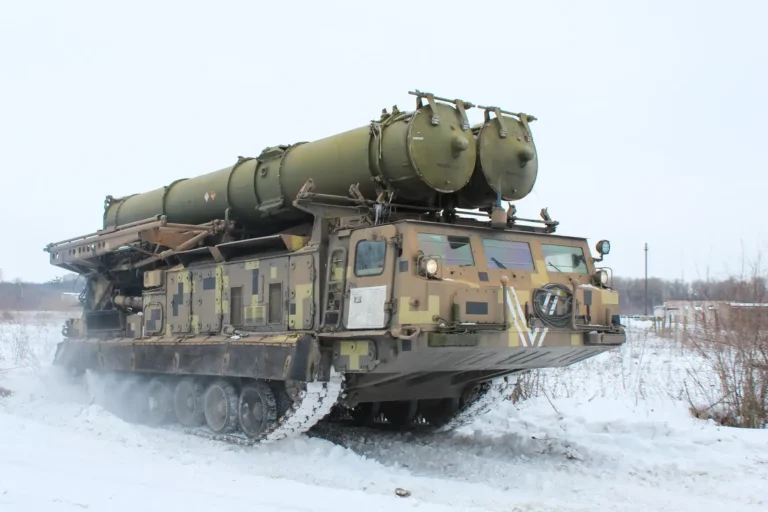Follow Us:

Share
On February 4, 2025, two Royal Norwegian Air Force F-35 fighter jets intercepted a Russian bomber group near NATO’s airspace in the High North. The Russian formation consisted of two Tu-95 Bear H bombers, escorted by two Su-27 Flanker-D fighters.
While the Russian aircraft did not cross into NATO-controlled airspace, the interception was a stark reminder of the growing tensions in the Arctic and the ever-present risk of military confrontations between Russia and NATO forces.

But what made this particular incident so noteworthy, and how reliable is the claim of the interception by the Norwegian F-35s?
The interception took place as part of Norway’s Quick Reaction Alert (QRA) mission, which is crucial for the nation’s defense as well as for NATO’s collective security.
The Norwegian F-35 pilots quickly located and identified the Russian aircraft, monitoring their movements while maintaining a safe distance to avoid any unwanted escalation.
According to Major General Øivind Gunnerud, Chief of the Norwegian Air Force, the prompt response of the F-35s ensures the protection of their airspace and demonstrates the robust defensive capabilities of NATO forces.
Interestingly, the intercepted Russian aircraft did not enter NATO airspace, signaling that their intentions might not have been entirely hostile, but the presence of Russian bombers in such a strategically sensitive area raised concerns nonetheless.
While this could be seen as just another routine interception of foreign aircraft, the situation took on added complexity given the strategic importance of the High North.

As NATO continues to focus on the Arctic region, which is experiencing growing geopolitical significance due to military interests, technological advancements, and climate change, these kinds of interceptions may become increasingly common.
While the Royal Norwegian Air Force has made it clear that the F-35s successfully intercepted the Russian aircraft, it’s important to approach such claims with caution.
Although the encounter occurred near NATO airspace and was accompanied by significant military presence, questions arise about the accuracy of the claim and the details of the interception itself.
For example, the pilots involved in the interception reported that the Russian aircraft never entered NATO airspace, which is crucial in determining the scale of the encounter.
Without solid evidence of a breach, it could be argued that the interception was more about surveillance and monitoring rather than engaging hostile targets.
Additionally, despite the high-tech capabilities of the F-35, there have been instances where similar aircraft have been intercepted by Russian fighters, raising questions about how consistently effective the F-35’s systems are in real-world scenarios.
While there were concerns about the F-35’s performance in certain real-world scenarios, the recent interception by the Norwegian F-35s raises an important question: how did they manage to respond so quickly and efficiently in this particular encounter?
The success of the Norwegian F-35s in intercepting the Russian aircraft can largely be attributed to the F-35’s advanced capabilities. The aircraft’s design and technology allow it to detect and respond to potential threats faster than most traditional fighter jets.

The F-35 pilots were able to identify the Russian aircraft with remarkable precision, even before the bombers and their escorts approached NATO airspace.
The quick response could also be linked to Norway’s constant monitoring of potential threats in the region, especially considering the Arctic’s strategic importance to NATO.
By maintaining a state of readiness and constantly tracking air activity in the High North, Norwegian F-35s are able to respond immediately when suspicious aircraft are detected. It’s not just about intercepting; it’s about staying one step ahead in a region increasingly under military scrutiny.
The F-35’s advanced technologies played a crucial role in enabling the rapid interception of the Russian aircraft. Perhaps the most significant technology in this context is the aircraft’s sensor suite.
The F-35 is equipped with state-of-the-art systems that allow it to detect, identify, and track multiple targets at long ranges, all while maintaining low observability to avoid detection by enemy radar.
In the end, while the F-35’s technological capabilities provide a solid basis for the interception, it’s important to note that the claim of a successful interception remains somewhat circumstantial.
Share
Defense Feeds is publication focusing on informing, engaging, and empowering the world by providing accurate information from defense technology.
Powered by Defense Feeds © 2025 – All rights reserved.